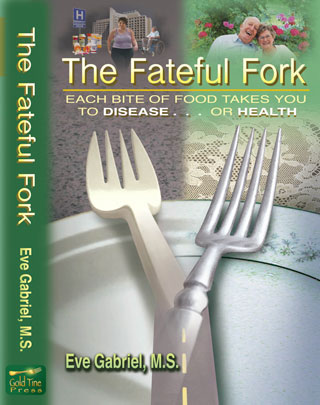Family oriented expert rifle training? Yes, happening at a range near you thanks to the Appleseed Project. You don’t have to go to Switzerland, anymore, to find whole families at the rifle range!
This is expert marksmanship being taught by enthusiastic riflemen who know what they’re doing. You won’t be awarded your Rifleman Patch until you’ve earned it. And what it takes and the word “Easy” don’t belong in the same sentence.
According to Fred, the man who started the Appleseed Project, “The purpose of the shoot is to promote history and marksmanship, to
provide marksmanship training opportunities, to train people to become
Riflemen and to teach them now to train other Riflemen”.
- “April 19th, 1775, When marksmanship met history and the heritage began.”
- “Liberty, Heritage, & Marksmanship“
- “Are you a Rifleman or a cook? Attend an Appleseed event and discover your heritage.“
Rifleman Introductions
I recommend four articles written about Appleseed by two esteemed Riflemen. Read Bill Buppert’s article about his second Appleseed back in 2008 where he brought the whole family “On The Road With the Appleseed Project: Creating Liberty One Rifleman at a Time”. Bill contributes his expertise through Appleseed to “Wake up the sleeping giant in America”. He kindly recommended first shooting .22LR and setting up my Ruger 10/22 with Tech Sights for which my shoulder and bank account are thankful.
Massad Ayoob documents his Appleseed experience in three parts including Lessons from Appleseed and the Guns of Appleseed.
My Appleseed One
My first Appleseed was in Sacramento, two weeks ago. The full service range is in a breathtaking part of the country. The fresh air and scenery were a perfect backdrop for an inspiring day.
Apart from the welcoming smiles of the volunteer staff the first thing that struck me was that whole families were there for the training! There were also two father daughter teams and three father son teams.
One third of the attendees were women including three rifleman trainers. Perhaps the only thing more impressive about the lovely ladies on the next mat over is that they were outshooting the men! Grrr. . .
The Rifle
I brought a Ruger 10/22 with tech sights and a plain GI sling with six magazines though four would have been fine. See Mas Ayoob’s Guns of Appleseed or Appleseed’s Liberty Training Rifle for tips on setting up your rifle.
Training for Precision
The training starts with the big things first moving in a circle around your shooting position. Every physical and mental factor leading up to the bullet exiting the barrel is covered. The quality of the shot is viewed as a reflection of the quality of the setup, trigger squeeze and follow through.
Every detail counts in an endeavor of precision and the training involves two days of getting every aspect of the setup into your muscles and bones. For the purposes of this article, however, I’ll briefly describe two aspects of the training that I particularly enjoyed: Natural Point of Aim (NPOA) and firing the shot “By the Numbers”.
What follows are this budding Rifleman’s summary of two, of many, aspects of the training. They give a flavor of the training though words are no substitute for the real thing.
Natural Point of Aim
The idea of NPOA is to setup your body around the rifle so that both are in a state of relaxed tension pointing at the target. Once in your NPOA your breath will cause the front sight to rise and fall vertically through the target. Much of the morning is spent learning what it looks and feels like to get into your NPOA in the prone position.
Adding breath control and their six steps of shooting by the numbers lays an excellent foundation for squeezing off consistent shots. The next step is learning to get into your NPOA in standing position and one seated position (Since body types vary you’ll be shown five seating positions to choose from).
Like most endeavors of precision Appleseed’s descriptions and demonstrations are easily described and demonstrated by the experts. However, teaching your body and mind to reliably and consistently setup your NPOA for the three basic positions is not easy and feels anything but natural, at first. This is especially true for the self-taught (Myself included) who need to unlearn bad habits and replace them with correct technique.
The pace of the training is brisk, methodical and complete. There are no shortcuts taken in building a solid Rifleman foundation. Considering the wide variety of people at the training it’s impressive to see everyone focus together to handle the pace and quality of the instruction.
Firing the Shot “By The Numbers”
Here’s another summary that gives a flavor for the training, but, is no substitute for the full descriptions and experience of being guided through each “Number” in real time by experienced Riflemen:
- Line up the front and rear sights.
- Bring the lined-up sights onto the target.
- Take a deep breath in, then out using the rise and fall of the front sight to establish NPOA.
- A: Focus your eye on the front sight. B: Focus you mind on keeping the front sight on target.
- Take up the slack and squeeze the trigger straight back (While concentrating on the front sight).
- When the hammer falls: Keep your eyes open, take a mental photo of the shot (Referred to as ‘Calling the shot’) and hold the trigger back for follow through.
The instructors are enthusiastic and patient with a keen eye for recognizing and correcting your weak areas.
After the first two hours I started wondering where else I could get such quality training at the price? “Nowhere” is the correct answer. Even if you offered to pay a family member’s gas, lunch and ammunition it would cost you more than Appleseed’s two day training for $70! (Women and children are currently free which I’ll be using to pursuade my wife to join me).
Appleseed Before Practice
Practice makes permanent, not perfect. What you practice determines what is made permanent.
Apart from zeroing your rifle I recommend attending the first day of an Appleseed before engaging in intensive practice with your rifle. In fact, have someone else zero your rifle if you trust them to do it. That frees you up to soak in the training and practice the right habits into your bones on every subsequent shooting occasion.
I spent the first half of the day unlearning bad habits. Best to err on the side of coming to an Appleseed before making bad habits permanent.
Master A Tool of Tools
Mastering a precision tool bestows benefits beyond the area of the tool, itself. In the case of a Rifle the benefits are profound. What profession or task would not benefit from the discipline and precision required to become a Rifleman?
- What about adjusting your sights is not transferable to adjusting a miter saw?
- What about establishing your NPOA is not transferable to target marketing?
- What about zero’ing a rifle is not transferable to Optimizing workflow?
- What about the shooting by the numbers is not transferable to visualizing your goals?
The benefits ricochet (Sorry) to and from all endeavors of precision. Inversely, the discipline and precision of master carpentry, for example, can be parlayed back into many aspects of the Rifleman’s craft, as well. For those who haven’t yet settled on a profession precision rifle training exercises a myriad of mental and physical ‘muscles’ that can be applied to future pursuits, yet unknown.
It’s been said that the 1st and 2nd amendments are the only rights required to guarantee the other eight Bill of Rights and all non-enumerated natural human rights. Apropos to their power learning to speak, write, express, worship and defend is optimally approached with an eye towards precision. It is somehow not enough:
- To understand the power of speech, yet speak imprecisely.
- To be willing to die for the freedom of worship yet be unspecific in praising God’s glory.
- To treasure Life and Family with no proficiency in the only historically proven means of their final defense against tyranny or uninitiated aggression.
It takes time, study, effort and keen interest to acquire mastery of these tools of tools. Yet, it’s worth every effort to acquire them even apart from the daily blessings they bestow.
The Day’s Results
According to Appleseed my maximum effective range is 400 Yards. That means I was able to get three consecutive shots to group within a man sized silhouette at 400 yards. In theory this is one step short of Rifleman, but, it’s not that simple.
The “Red Coat Test” (So named because the targets are red to symbolize the British uniforms in the Revolutionary War) is shot from only one position and is not as strict as the Army Qualification Test (AQT) test given the following day where you shoot in three different positions while being timed.
I spent most of the day soaking in the fundamentals and replacing bad habits. That’s probably par for the course for guys who didn’t have the good fortune of Appleseed-like training when starting to shoot. Also, since I didn’t re-zero the .22 after installing iron sights I failed to realize they needed serious adjustments beyond the settings possible on the sights. Therefore, I spent the day looking at groups still 4 inches off the target. For the last two hours an instructor (Thank you, Pat) lent me his 10/22 rifle with a scope. This was great timing because I was able to see the results of the days efforts on targets instead of groups.
I was able to attend only one day of this two day event. Perhaps I could have shot Rifleman the next day though it would have felt wrong to do so with a borrowed rifle. I’ll be back for a proper two-day Appleseed in the next few months. In the meantime, this one day of training has set the tone for practicing the right habits into bone and muscle.
Prep for Appleseed Two
If you’re planning to attend an Appleseed their “What to bring to an Appleseed Event Checklist” is great. Make sure to bring a hat for the sun or a raincoat for the rain. I also recommend binoculars (If you’re not using a scope) to see your patterns between courses of fire where you won’t be walking down to the target. My personal prep for Appleseed Two is to:
- Bring a backup rifle – Just like the “What to Bring” sheet says – bring a backup rifle. There’s just no time to make major adjustments to your primary without missing key elements of the training.
- Zero both rifles prior to arrival – They cover sight adjustments in the training, but, the elevation adjustments on my tech sights were maxed out and required disassembly to correct. Since I was only there for the Saturday session an instructor loaned me his backup rifle so I wouldn’t be sidelined. Also, to keep the line safe shooters are discouraged from working on their rifles outside of the preparation period. There’s really no time to focus on making major adjustments to your rifle. It’s best to come with a zero ‘d rifle with all the kinks worked out before hand.
- Replace the factory with an auto bolt release – Smooth magazine changes are required for the AQT. Placing my finger just right does the trick, but, it’s a distracting hassle that annoys at the end of the day.
Goals
- Earn the Rifleman’s patch with the .22 LR.
- Requalify with a .308 to remap the training into a true 500 yard round.
- Persuade my wife to take a drive in the country and and see what her husband is excited about.
- Invite my friends to come along (I’ll drive, pay gas, share ammo and prepare your rifle, if requested!).
- Spread the word – Fulfilled with this article, but, not likely to end here.
Planting Seeds of Life & Precision
“Freedom is never more than one generation away from extinction” – Ronald Reagan
On April 19, 1775 better men than I were faced with a choice: Freedom or Slavery. They chose Freedom and paid dearly for it. The men and women of Appleseed have not forgotten and are planting seeds of life & precision in the hearts of new generations of Americans. At a time when dozens of HD screens in every home are turning brains into mush these guys are off the couch breathing the fresh air of the countryside and passing on timeless values and skills.
Politics aren’t required to embrace something fun for the whole family that instills values, skills and benefits far beyond the training, itself. The precision skills parlay into any future profession so why not take a cue from Bill Buppert and make Appleseed part of your homeschool curriculum?
Family oriented expert rifle training is happening at a range near you. Thanks to the Appleseed Project we don’t have to go to Switzerland, anymore, to find whole families at the rifle range! Who knows? With all these sparkling new rifles and Rifleman budding forth maybe it’s not too much to hope for the stabilizing peace and freedom that historically follows in their wake, was purchased by our ancestors and is currently enjoyed by our Swiss friends.
— Special thanks to Shoot Boss BaldDragn and assistent trainers James, eaglescouter, Jules, DoubleD, NorCal22Gal and Pat who trusted me with his rifle.
Copyright © 2010 by Terence Gillespie. Permission to reprint in whole or in part is gladly granted, provided full credit and a live link are given to McGillespie.com












